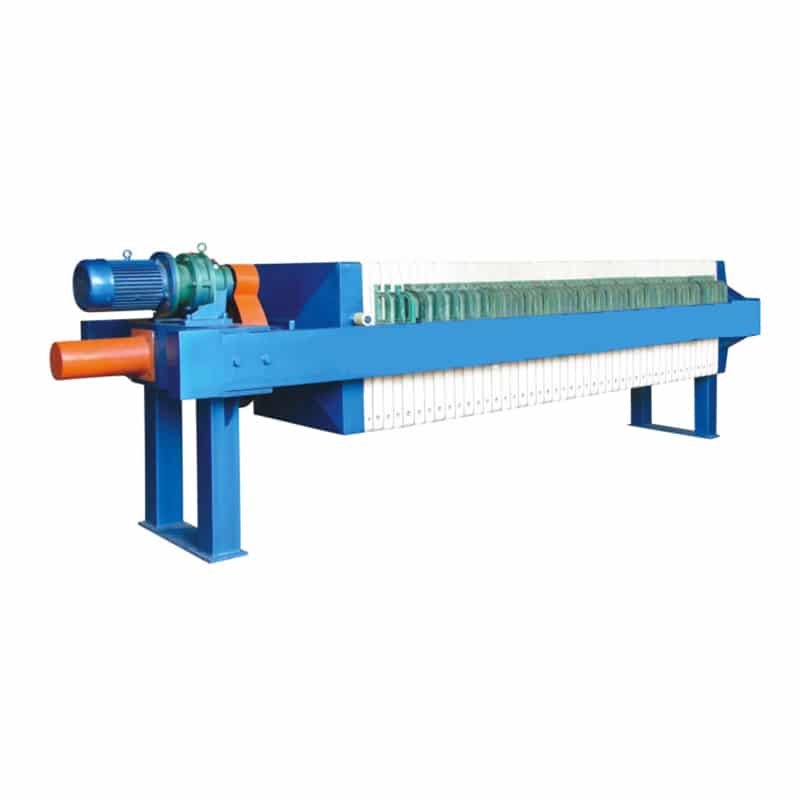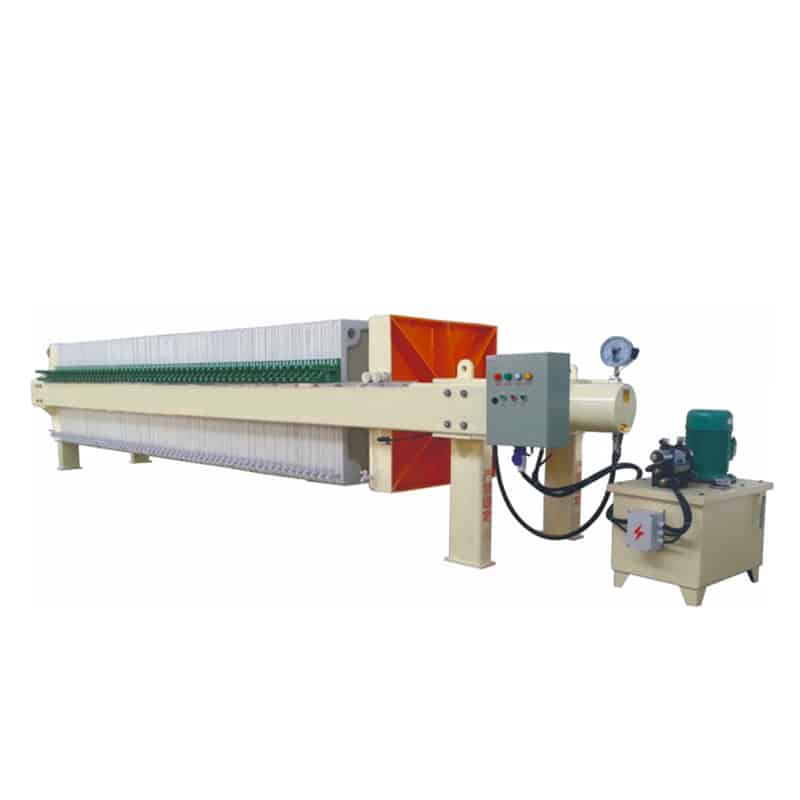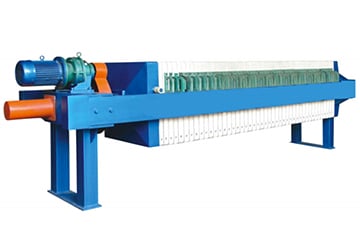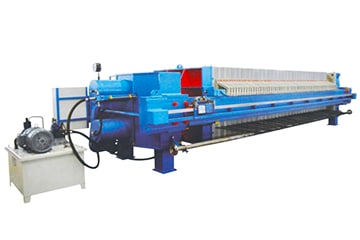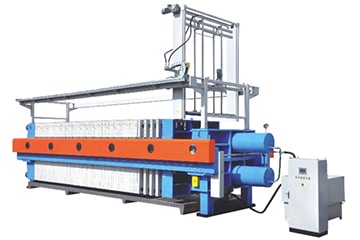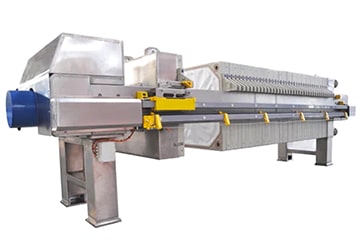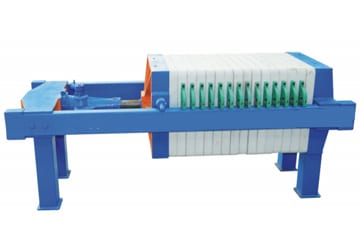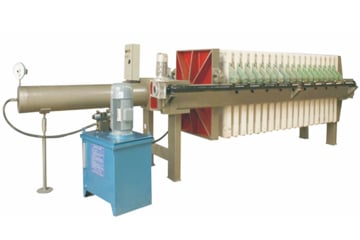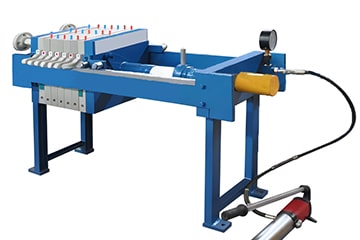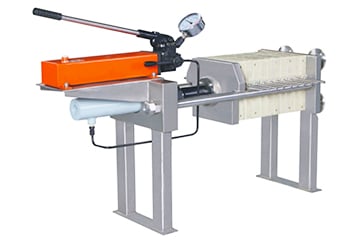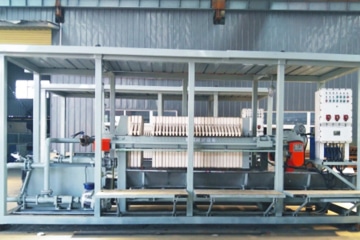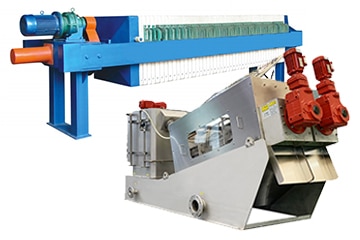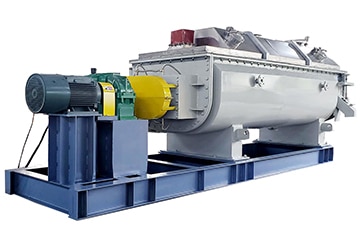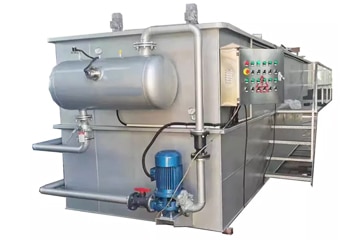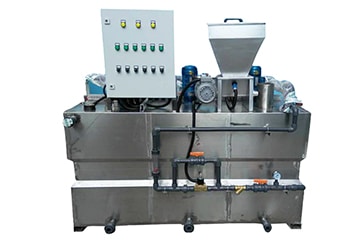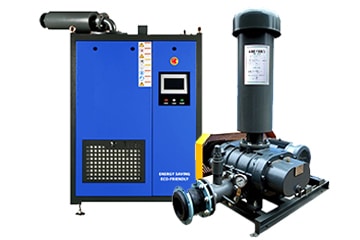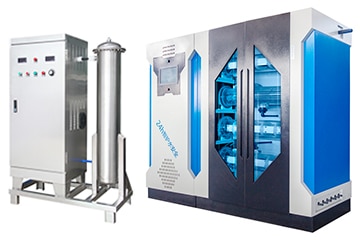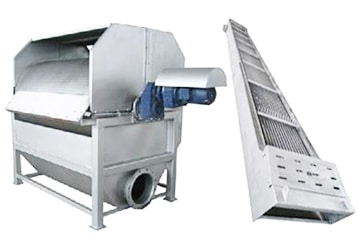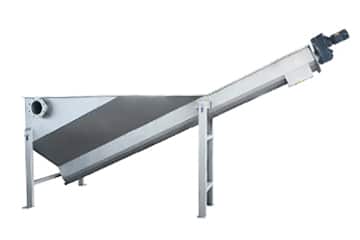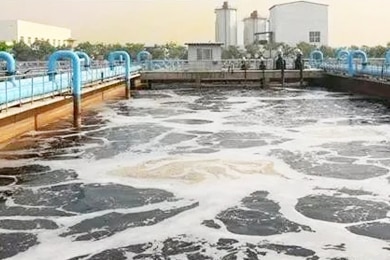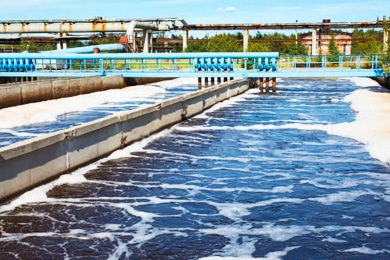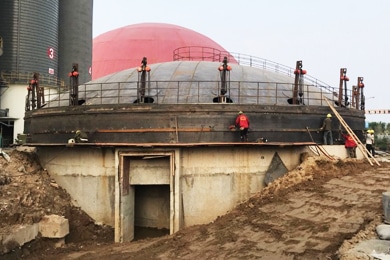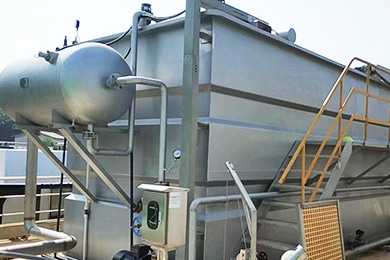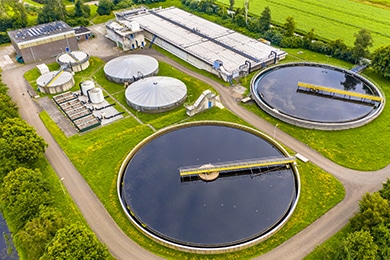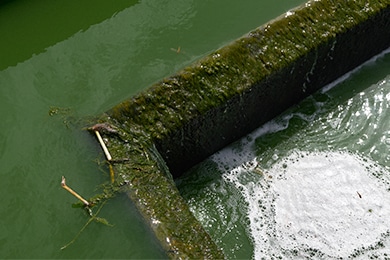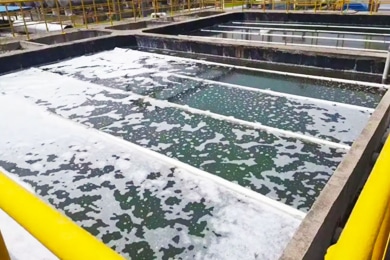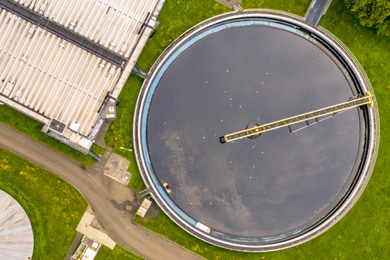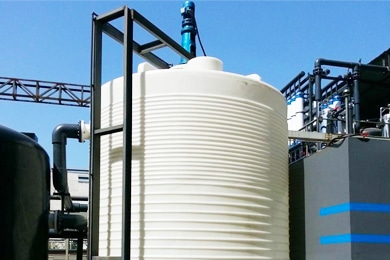Plate and Frame Filter Press
The design of the plate and frame filter press uses a flat solid plate covered with a filter press cloth with a hollow frame between each plate. A metal skeleton holds and clamps the filter plates together to form a chamber, which is formed by flushing plates on either side of the frame, and the output filter cake is collected inside the frame. Advantages include low cost, high strength and easy internal inspection.
How does a plate and frame filter press work?
Slurry is pumped into the corner holes and flows into each frame, allowing solids to accumulate on the filter cloth. The remaining filter liquid (also called filtrate) then moves to the drain in the flushing plate and into the corner holes that are not used for the feed slurry. The filtrate then flows to the discharge pipe and is directed to the next step in the process.
After a period of time, the frames are filled with solids, the slurry feed pump is turned off and the filter press is ready to open. Each frame should now contain a filter cake, which is the end result of the solids forming on the filter cloth. The filter cake is then scraped out of the frames using a scraper and ideally falls into a filter cake funnel located below the press.
Advantages
Plate and frame filter presses allow for quick filter cloth changes, as well as the ability to use a wider range of filter media materials, including paper, which is typically used for fine filtration applications.
In processes where immediate particle retention is important, filter paper may be required because fine solids can block the filter cloth or simply pass through it. The filter cloth can be reused, but replace the filter paper after each filtration cycle.
Plate and frame presses are best suited for projects where filtration area is more important than volume. This is why plates and frames are most prominent in polishing applications (as opposed to dewatering projects) where the feed solids concentration is typically well below 1% (by weight).
Size the polishing application for a specific filtration area based on the process flow rate and a known flux rate (volume per unit time per area). To avoid the drop in filtration flow rate that can be achieved when the press is filled with solids, polishing applications often include redundant filter presses that are also sized to accept 100% of the required process flow rate.
Disadvantages
One of the disadvantages of the plate and frame design is the possibility of establishing uneven pressure between the frames, which can lead to plate damage. This problem stems from the fact that the frames are fed through a small opening in the corner, which can lead to clogging. This blockage can cause one frame to become full, while the next frame remains empty online.
Another disadvantage is the potential for leakage. The filter plates used in plate and frame presses are gasketless, which allows them to draw off liquid under pressure. This type of filter press is usually mounted on a raised platform or placed on a pit where any leaking liquid can be more easily collected.

